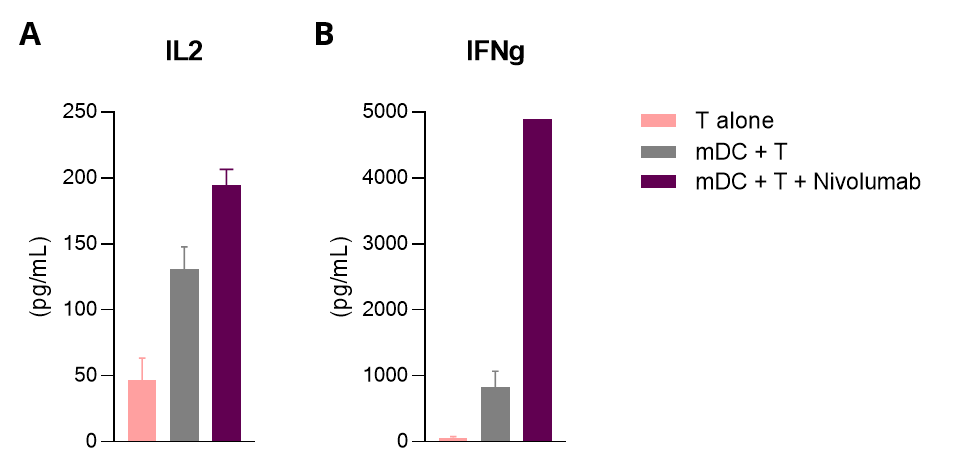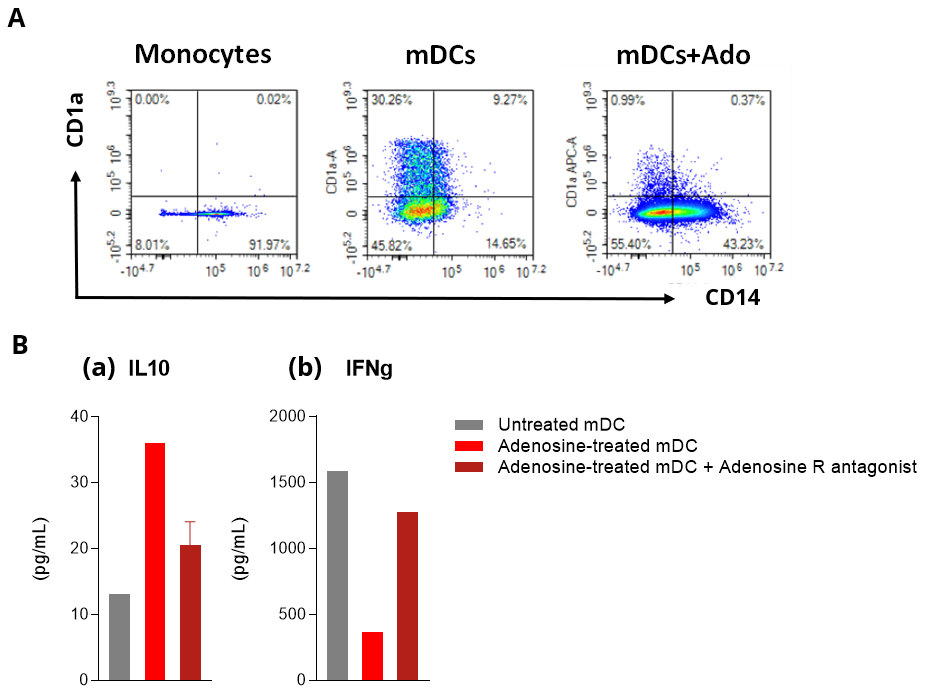Immunological synapse that occurs between T lymphocytes and dendritic cells (DCs) is a key component for an effective immune response, where DCs specialize in the initiation of immune responses by directing the T cell fate. For their function, either immunogenic or tolerogenic, DC subpopulations are generated through the engagement of many signaling cues, and the nature of these signals only determines their functional properties. Indeed, DCs can stimulate the polarized outgrowth of T cell subsets but, depending on their maturation context, generated DCs may have an adverse effect, thereby underlining the ability of the microenvironment to control their function.
Hence, interventions through a fine-tuning of these signal cues are key so as to elicit or boost an anti-tumor immune response, for instance.
The data shown here illustrate our DC differentiation and mixed leukocyte reaction (MLR) assay as a valuable and robust tool to address DC function and evaluate the modulation of their mediated immune response. Based on a co-culture of allogenic CD4 T cell (responder) and monocyte-derived DCs (stimulator), our assay is specifically configured to get either basal MLR (Fig 1) or impaired response (Fig 2) due to an immunosuppressive condition, e.g. Adenosine, leading to tolerogenic and functionally dysregulated DCs. This thus makes it well suited for evaluating biologics for their modulating ability to either i) amplify an immune response or ii) alleviate an immunosuppressive condition and trigger DC-mediated T cell-stimulating activity.



